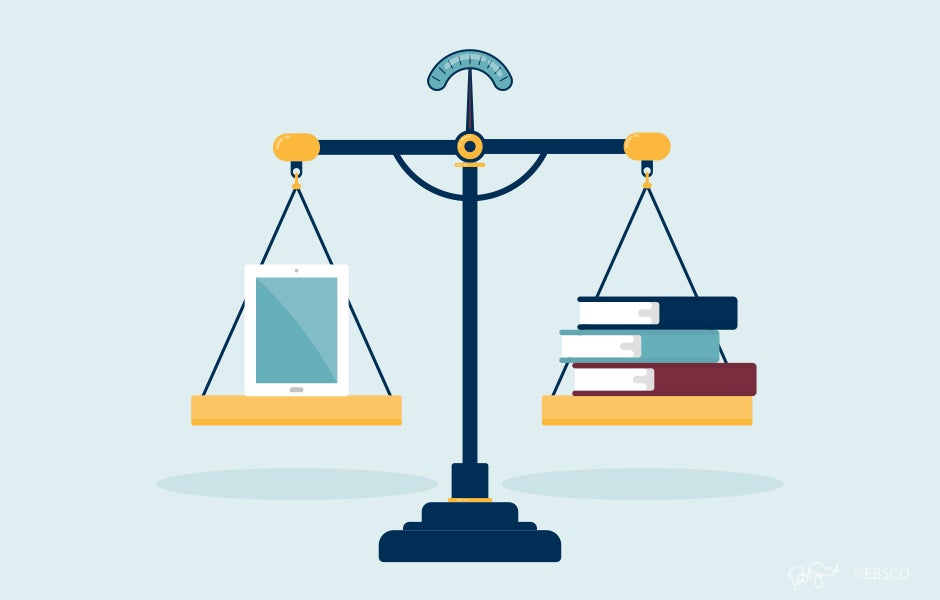There are many resources and methods that librarians can utilize to find and acquire print books and e-books for their libraries, and every library approaches collection development differently. How do you make the most of your budget while maximizing the number and quality of books you make available for the students, faculty and researchers at your library? To meet your library’s collection development goals, it is vital to have a balanced strategy. Different methods of discovering and acquiring print books and e-books have their advantages and disadvantages, depending on your library’s specific needs and goals. Whether your focus is on long-term collection building, just-in-time access, or somewhere in between, it’s essential to determine a collection development strategy that will benefit your library and patrons now and far into the future.
How do you make the most of your budget while maximizing the number and quality of books you make available for the students, faculty and researchers at your library?
How do you make the most of your budget while maximizing the number and quality of books you make available for the students, faculty and researchers at your library?
One session at the 2017 Charleston Conference, Finding the Right Mix: A Holistic Approach to Collection Development, focused on this subject. Shannon Burke, Discovery Services Librarian at the University of Houston – Clear Lake and Eric Wedig, Coordinator of Scholarly Resources for Social Sciences at Tulane University, in conversation with Kim Anderson, Senior Collection Development Manager at GOBI Library Solutions, discussed the need for a holistic approach to collection development. The panel discussed the importance of understanding all of the collection development methods and models that are available for both print books and e-books to determine what mix works for their respective libraries.
Both librarians identified decreasing book budgets as well as staff limitations/changes as challenges they face in developing their collection development strategies. To overcome these, and to make sure she gets the right balance of ownership and access for library users at U. of Houston – Clear Lake, Burke uses a combination (in order of use) of print firm orders, DDA, e-book firm orders, approval plans and e-book packages. She explained that she continually evaluates her practices and models to ensure that she is finding the best balance for her collection development goals.
At Tulane, Wedig uses a mix (in order of use) of approval plans, firm orders, e-preferred approval plans, e-book packages and DDA. He manages these various models by working closely with faculty and graduate students to understand their research needs, gauging trends that other research libraries are following, and understanding that with limited resources they must be careful that what they purchase is going to be used.
During the presentation, Burke and Wedig discussed three steps to creating a balanced collection development strategy:
- Understand the components/models involved in book and e-book acquisition.
Both Burke and Wedig considered their own collection development challenges, and made sure they understood the benefits and drawbacks of each of the collection development models they were using, realizing that it made sense to utilize each model as it fit their collection development needs.
- Look to other similar libraries to see how they approach collection development.
Wedig explained that he looked to other research libraries to see what mix of models they were using, and seeing if they’ve stuck with anything in particular or if they have made any changes to how they approach collection development.|
- Experiment to see what works for your library and for your budget.
Both Burke and Wedig also acknowledged the trial and error involved in creating a balanced collection development strategy. In fact, during the presentation at Charleston, one librarian in the audience admitted to going “DDA-happy” and not using up all of her budget last year, leading to her budget being reduced the following year. It is essential to experiment to see how a certain acquisition method will work for your library, how it will work in context with other methods you choose, and if it will meet your library user goals as well as your collection development goals.
